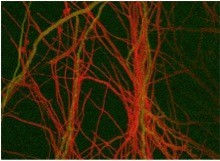Thermophilic fungi in energyNOW!
Next-generation biofuel refining is based on tweaking enzymes to break down plant walls and convert biomass to fermentable sugars. The research has two main goals. One is to find ways to cut down the energy input needed for biofuel processing. Read more on energyNOW! [Read More]

